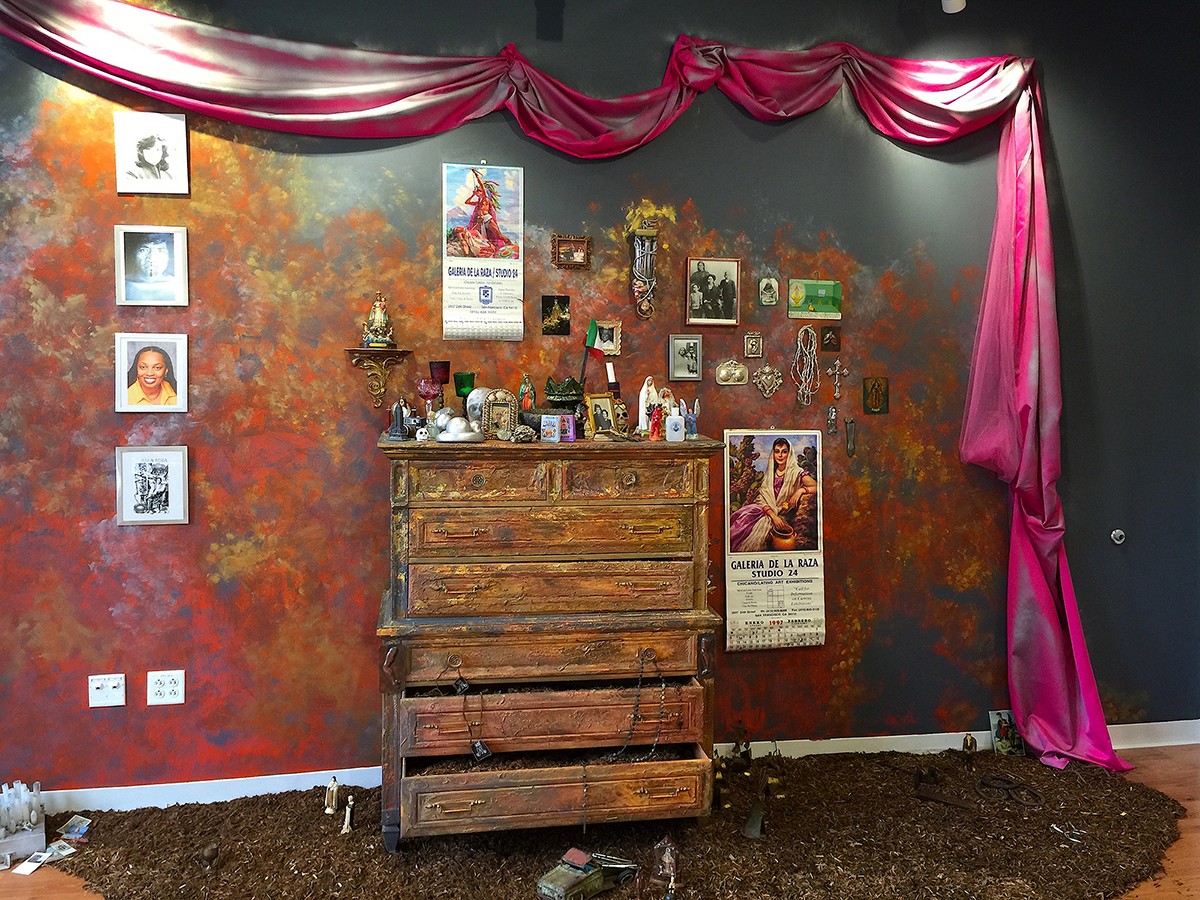1275 Minnesota St /
Rena Bransten Gallery
Rena Bransten Gallery is pleased to present Emblems of the Decade: Borders, an installation by Bay-Area based artist Amalia Mesa-Bains. The exhibition is organized to coincide with the first major retrospective of Mesa-Bains’ work, Archaeology of Memory, now on view at the Berkeley Art Museum through July 23, 2023.
Emblems of the Decade: Borders is an immersive presentation, including multiple elements which address concerns of displacement, deterritorialization, and immigration facing Latinx and Chicanx communities in the United States. Central to the installation is a dresser turned alter, based on a traditional Mexican home altar, a common element of Mesa-Bains’ work. The alter serves as a type of cabinet of curiosities – a reliquary for deeply personal objects: family photographs and other mementos (both from the artist’s family and the families of friends and her peers), sacred objects (the Caribbean Virgin of Caridad del Cobre, small statues of the Virgin of Guadalupe, saint’s cards) and objects of healing (soaps, metal amulets). Fresh soil spills from the open dresser drawers onto the ground, a fusing of nature and memory – life and decay.
Since it was first exhibited at the Studio Museum in Harlem as part of The Decade Show (1990), iterations of Borders have been shown in museums and other venues, each installation including rotating elements reflective of the current moment. Emblem of the Decade: Borders was included in the Third International Biennial, Istanbul (1992), the opening of the new Caribbean Cultural Center, NYC, 2016 and most recently it was exhibited in Califas: El Arte de la Zona Fronteriza Mexico-Estados Unidos (Arts of the US-Mexico Borderlands) at the Richmond Art Center, CA (2018). Through these multiple iterations, one unifying tenet persists: how does one create home while existing within politically constructed borders? From Mesa-Bains’ early days as an activist, to the Trump era policies around DACA (Deferred Action for Childhood Arrivals), and the separation of families and caging of children at the US/Mexico border, Borders has been relevant for decades and is a work that the artist has revised over time in response to shifting realities around border politics.
